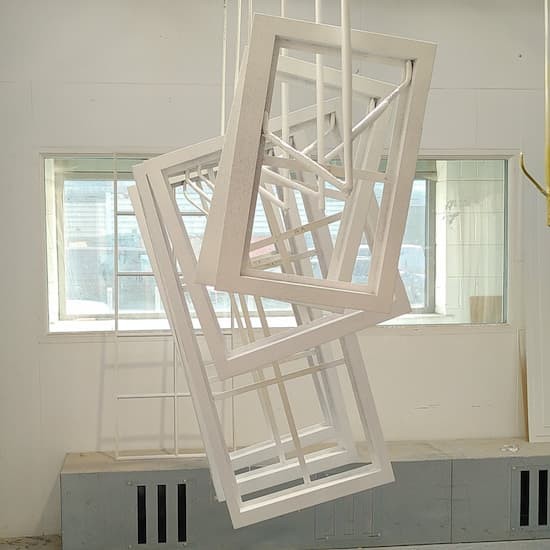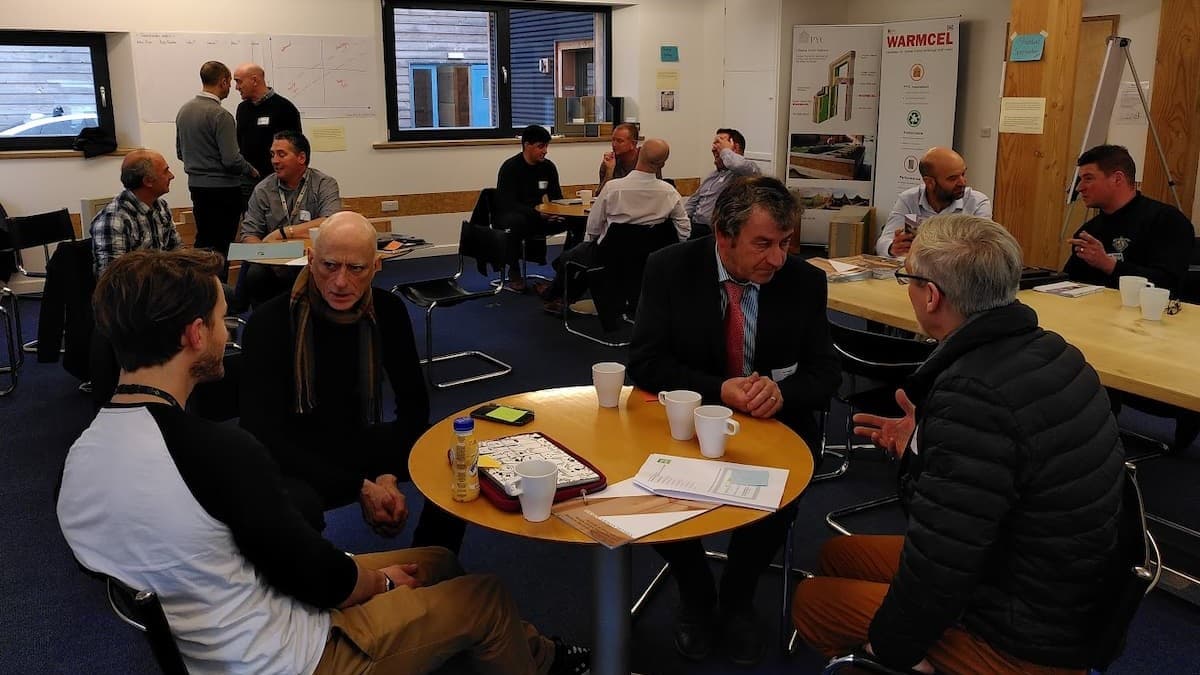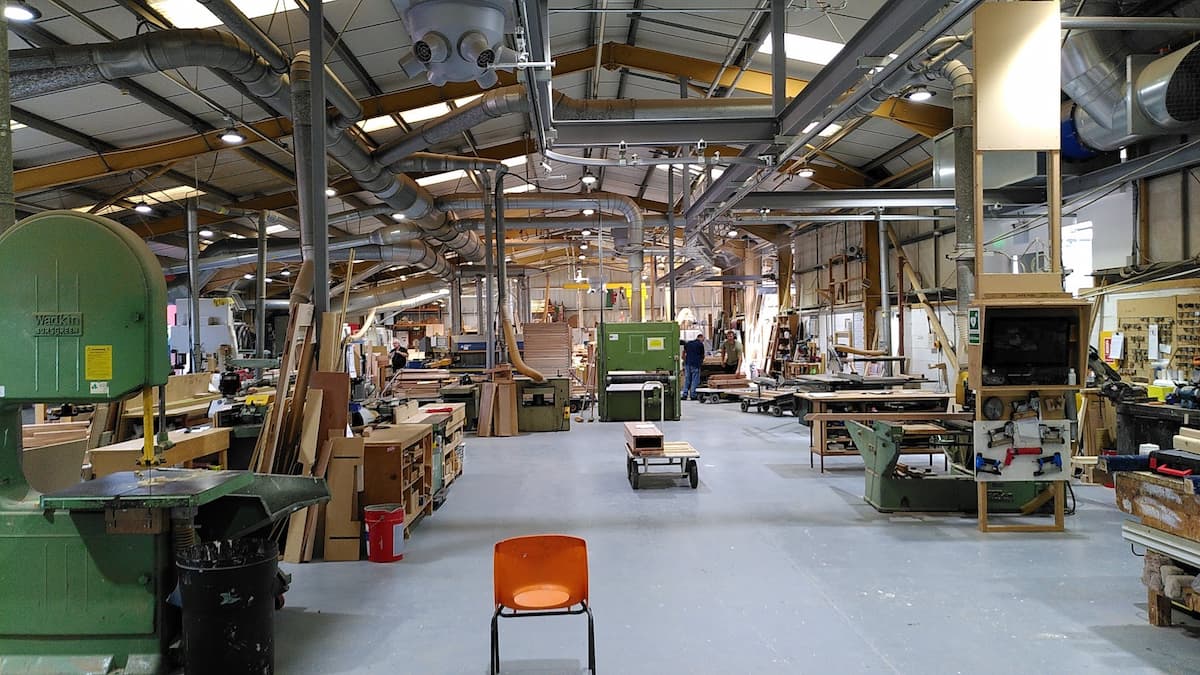Summary
Windows for a low-carbon future
What if we could make better homes from a locally grown natural resource like timber? What if the windows in these homes were made by local people using local wood? What if we could create a circular economy benefiting rural communities and people in social housing by manufacturing such windows in Wales? What if we could gather a group of joinery businesses across the country to collaborate on product specification and manufacturing to enable delivery of low-carbon high-performance windows into social housing at an affordable cost?

We’re in early 2023. According to the plans an image of a successful pilot project should be heading this post, the fruit of a two-year collaborative development between a group of independent joinery businesses in Wales. But that’s not what happened. Life did - with all its dynamics, unforeseen challenges, emerging opportunities, changes of direction. What remains is the focus on potential and the intention to deliver low-carbon wooden windows for social housing made in Wales.
This story is about exploring one way to get there, it’s about understanding the variety of needs, capacities and interests of businesses, their commercial and cultural environments, their trust and entrepreneurial spirit.
Window of opportunity
When market needs and manufacturing interests are starting to align, new opportunities for better product development arise.
Over the course of several years of collaboration with social housing providers on low carbon timber buildings, Woodknowledge Wales had come to understand that there were some technical as well as perceptual barriers to using wooden windows. At the same time, social housing providers expressed strong interest in replacing uPVC windows with low-carbon wooden ones, ideally manufactured in Wales, while some joinery businesses explored manufacturing prototype windows from Welsh wood. The window of opportunity for a joint approach to product innovation and delivery seemed wide open.
Call for collaboration
On a cold winter’s day, a group of 16 joinery manufacturers, housing associations, suppliers and trade bodies gathered in Welshpool...
They discussed how best to harness the potential for timber windows in Social Housing in Wales. Potential opportunities and existing barriers were discussed and a number of ideas for supply chain solutions further developed by working groups on the day. Strong support was given by all participants to co-developing a standardised window design for new buildings and retrofit which would respond to requirements for building performance and security certification. Levels of enthusiasm were high, the road ahead looked promising. This was in December 2019.

Venturing into uncharted territories
Just a week after Welsh Government had given us the green light and committed to funding our 2-year programme of in-person workshops, training and marketing, the UK went into its first lockdown.
We all remember what happened in early 2020, when the Covid pandemic started to spread across Europe. Joinery workshops and factories remained closed for several weeks, no-one knew when business activities would resume. Morals were low for many and yet there was hope. In early May 2020 we had our official kick-off meeting online. We were joined by 15 participants from joinery businesses, suppliers for coatings, ironmongery, window scantlings and industry bodies, many of whom were not familiar with video conferencing nor typically found behind a computer. We were venturing into uncharted territory with a sense of joint commitment to the road ahead.
Client needs and innovation potential
Who decides which products are going into a building? What type of window and technical performance do they specify and what do they buy in the end? What price are they willing to pay?
In a series of online surveys and semi-structured interviews with social housing developers, architects, contractors and timber frame manufacturers we established that simple does it – with rising expectations. A simple casement window, similar to what Welsh joinery businesses already manufactured, was most procured for new build and retrofit projects. However, industry expected future developments to require windows achieving performance criteria equivalent to Passivhaus standard, a major leap in performance of standard windows and not something Welsh manufacturers were producing, yet. This sounded ambitious and exciting.
The market goes crazy
What to do when demand starts skyrocketing and all hands and minds need to be focussed on production of existing window types?
With the best intentions, we agreed on specifications for a standard window fit for the current market and a high-performance window in line with future demand, the prototyping of which to be conducted in an iterative approach. Now we needed to establish a common manufacturing process which would work with the variety of tooling each joinery business had. While we knew that this would likely be one of the most challenging parts of the journey, we hadn’t anticipated facing skyrocketing demand for custom made timber windows putting all of our collaborators at capacity for months to come. Sales figures went up. So did material prices and shortages. Our innovation project almost ground to a halt. No-one had the head-space or time to invest in prototyping. What had been an exciting opportunity started to become a burden.
Shifting goal posts
Just like thermal performance, requirements for security of windows and doors are updated every 5 years. This typically leads to higher specifications.
The latest edition of these legal requirements was delayed but expected to be published any time soon. Should we wait to get some clarity or try to forge ahead with the risk of delivering something to market the certification of which would no longer be in line with latest requirements? At the same time, some tooling suppliers started developing their own windows scheme open for window manufacturers to buy manufacturing licences for in the future. They were facing the same questions whilst offering us a potential alternative to our own approach.
Innovative business solutions
In parallel to our explorations of manufacturing potential we were looking at business solutions for our emerging group scheme.
The scheme would need to facilitate one client procuring a large number of windows, subsequently manufactured by several small to medium sized joinery businesses. Again, we engaged with the different parties involved - joinery businesses on the supplier side, housing associations and local authorities on the client side - to establish how we could best organise the coordination of tenders and contracts. Of the three options discussed, strong preference was given to the “neutral vendor”, an agency role gleaned from the recruitment sector which had been suggested as an ‘out of the box’ option by one of the joinery businesses. A working group was formed to further explore how this model would work in practice considering all legal and commercial aspects including pricing, branding and marketing.
The question of quality and trust
Trust is the basis of any collaboration. We had to ask what ensures quality and trust between the group and their potential clients as well as between the joinery businesses in the group.
Manufacturers were crucially aware that their commercial success and reputation ultimately depends on consistent quality of products and services across all businesses in a group scheme. The window certification demands rigorous quality standards and identical production protocols. If anyone fails, the scheme fails. This was our Achilles' heel. It quickly became clear that reluctance was high among manufacturers to face potential risks despite a list of audit requirements they had defined for anyone joining their scheme. Joining a licensing scheme of a tooling supplier seemed by far the better option for the vast majority of our group. We had to acknowledge the facts and change course.
Working towards potential
Where’s the potential and where’s the need? All our explorations had led us to the crossroads of diverging needs in a context that had fundamentally changed since our project start. Where next?
Joinery businesses are supplying their existing customers and have neither need, nor capacity to invest in developing new products to suit the social housing market. Social housing providers are still looking for high-performance timber windows that meet their particular requirements in terms of durability and robustness, maintenance, whole-life carbon, security certification and cost. And they want to invest in local manufacture that benefits local people.
A number of ‘investment’ options could take us there: from setting up a manufacturing cooperative with housing associations to joint ventures with manufacturers of timber systems and anything in between. We’ve decided to tap into the power of collective intelligence to co-create our path forward. Stay tuned.

Role
We developed the project proposal and have been in charge of leading the project since its inception as part of our work with Woodknowledge Wales.
Equipment
- Programme design & management
- Stakeholder analysis & engagement
- Workshop design & facilitation
- Online surveys
- Semi-structured interviews
- Site-visits
- 3D Mapping
- Storytelling
Collaborators
Last adventures

Imagining regenerative retrofit
What if we could gather our communities around the need to retrofit our homes? What if we could create a tiny house that rolls and floats as our vehicle for collaboration?
Learn more
Make room for nature
What if we made ourselves aware of how we relate to the world? What if this helped us change our posture and our practice? What if we used the opportunity to present in a professional setting as a space for contemplation?
Learn more